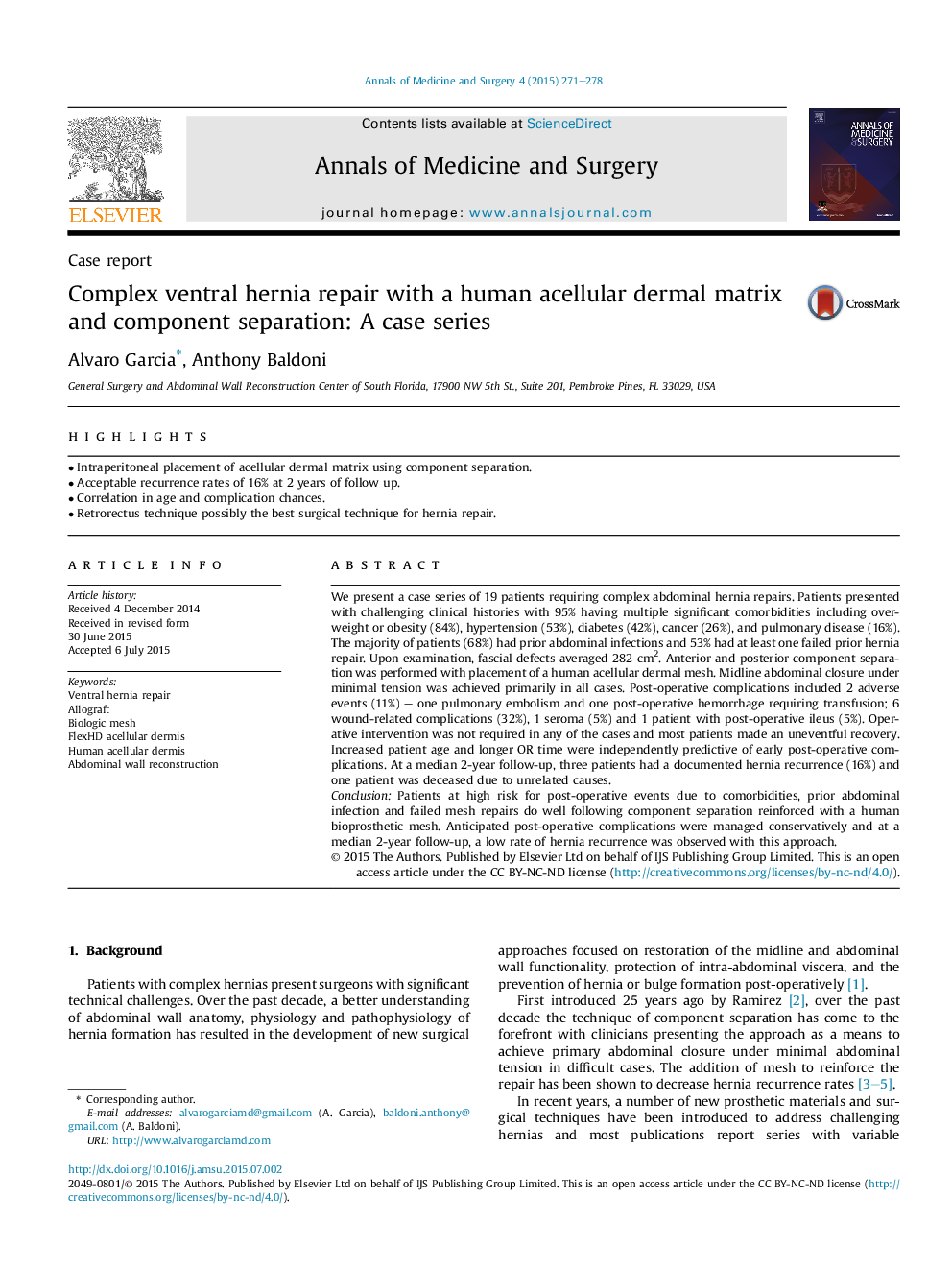| Article ID | Journal | Published Year | Pages | File Type |
|---|---|---|---|---|
| 4195404 | Annals of Medicine and Surgery | 2015 | 8 Pages |
•Intraperitoneal placement of acellular dermal matrix using component separation.•Acceptable recurrence rates of 16% at 2 years of follow up.•Correlation in age and complication chances.•Retrorectus technique possibly the best surgical technique for hernia repair.
We present a case series of 19 patients requiring complex abdominal hernia repairs. Patients presented with challenging clinical histories with 95% having multiple significant comorbidities including overweight or obesity (84%), hypertension (53%), diabetes (42%), cancer (26%), and pulmonary disease (16%). The majority of patients (68%) had prior abdominal infections and 53% had at least one failed prior hernia repair. Upon examination, fascial defects averaged 282 cm2. Anterior and posterior component separation was performed with placement of a human acellular dermal mesh. Midline abdominal closure under minimal tension was achieved primarily in all cases. Post-operative complications included 2 adverse events (11%) – one pulmonary embolism and one post-operative hemorrhage requiring transfusion; 6 wound-related complications (32%), 1 seroma (5%) and 1 patient with post-operative ileus (5%). Operative intervention was not required in any of the cases and most patients made an uneventful recovery. Increased patient age and longer OR time were independently predictive of early post-operative complications. At a median 2-year follow-up, three patients had a documented hernia recurrence (16%) and one patient was deceased due to unrelated causes.ConclusionPatients at high risk for post-operative events due to comorbidities, prior abdominal infection and failed mesh repairs do well following component separation reinforced with a human bioprosthetic mesh. Anticipated post-operative complications were managed conservatively and at a median 2-year follow-up, a low rate of hernia recurrence was observed with this approach.
